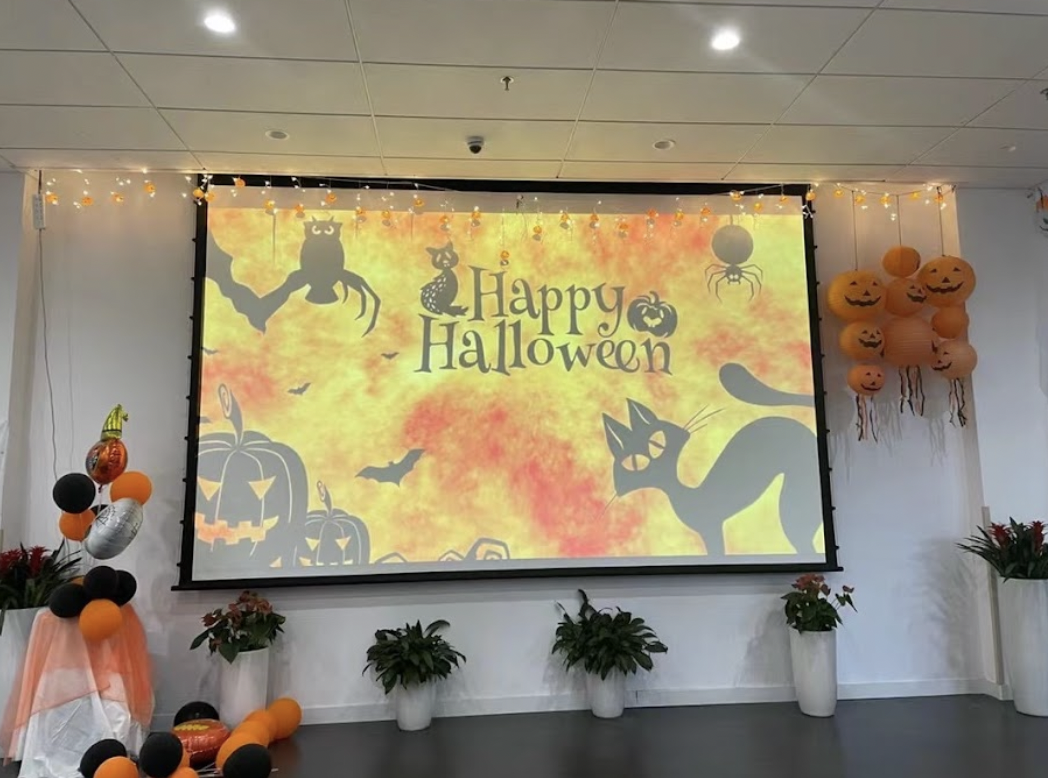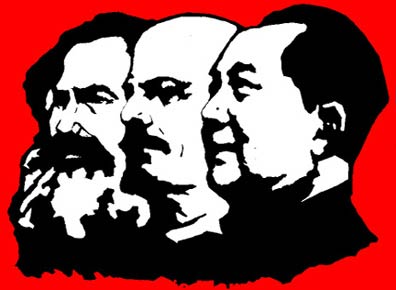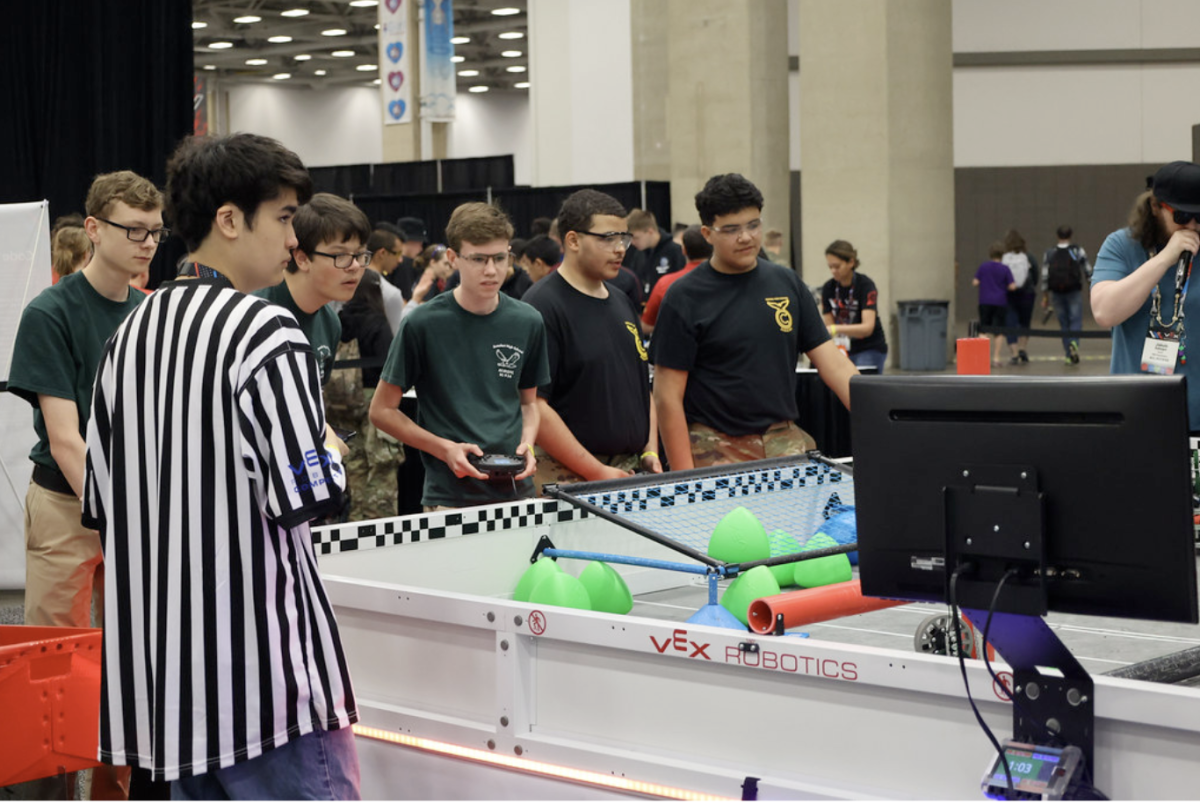What are quantum dots? When you hear the word “dot,” you might think of a little blot or “a small round mark or spot,” as Google says. But in actuality, the “dots” that chemists are referring to are way smaller than what you think. Quantum dots are only a few nanometers in dimension, existing outside of the visible scale. The quantum part of the term refers to quantum mechanics (wow what a shocker), which is just a fun term to describe the field of study of nature when on the scale of atoms or subatomic particles. These particles exhibit extremely cool properties due to their small size (nerdy stuff in the last paragraph for those who are interested).
If you own lots of jewelry or use common sense, gold is always gold-colored (or yellow if you want to call it that). Your silver spoons or whatever silver utensils will always be their shiny color as well. If you suddenly got shrink-rayed or ate some magic beans, your accessories, clothing or other items might all change into unexpected colors. For example, your golden necklace would suddenly turn a rosy red shade, or your silver utensils (although I realize that no one uses silver utensils anymore) will turn a nice yellow color.
Not quantum dots, but instead gold nanoparticles on the left, and silver-plated gold nanoparticles
Now that I’ve explained what quantum dots are and one of their cool traits, let’s discuss who was awarded the Nobel Prize and what for.
Moungi G. Bawendi, Louis E. Brus, and Aleksey Yekimov were awarded the Nobel Prize for the discovery and development of quantum dots. While it was theorized that particles of the nanoscale would exhibit different behavior than other particles, scientists weren’t able to effectively test or create nanoparticles.
Onto a completely separate and “unrelated” topic, have you ever wondered why glass can be so differently colored? It’s not like glassmakers can just mix food coloring into their molten glass and shazam it comes out blue-colored or whatever. Well, they do something very similar. Instead of food coloring, glassmakers in the past would experiment with adding different chemicals to their glass, and when blown out, it would make beautiful glassware.
Connecting this back to our main topic, Yekimov was interested in why glass could exhibit such different colors. He channeled his inner glassmaker and systematically produced glassware doped with copper chloride, heating it at a wide range of temperatures and for varying times. When it cooled, he examined the glass on a much smaller scale and noticed tiny crystals of copper chloride in a variety of sizes and found a trend that the glass with smaller crystals would absorb more blue light whilst the glass with larger crystals had effects similar to normal copper chloride.
In a similar manner, Brus discovered that nanoparticles changed in optical properties completely by accident. When working on solar energy using particles of cadmium sulfide, he noticed that the particles in a solution would change after he left them on his workbench for a while. To examine this process, he created these particles at varying sizes and like Yekimov did, created a trend relating their sizes to their optic effects. With the results he published a paper and shifted his research towards repeating the process with other compounds, noticing the same results as before.
Now comes our final contributor, Bawendi, who worked in Brus’ lab while they were attempting to discover how to produce quantum dots. After a long arduous process of trial and error, Bawendi discovered that you can slowly add substances that would produce the compound you wished into a hot solvent, which would make small crystal seeds. But as the addition of the substance cooled down the solvent, the crystals would stop their growth there. With more heating of the solvent, these crystals could be grown into whatever size quantum dots the scientists wished for.
After covering our three Nobel Laureates, you might be wondering: What are quantum dots even useful for? Well currently, quantum dots are used in many places, ranging from the medical industry to being used in television. For doctors, quantum dots are used to illuminate people’s organs during surgery so they don’t accidentally snip snip the wrong thing. For an explanation on that: quantum dots glow when you shine UV light on it (once again I’ll explain this in the last paragraph, just leaving my nerdy rant at the end). Quantum dots can also be used in television and general screens to create the computer screen that you stare into for hours and hours while being energy efficient. Already with just these two uses, we can notice that quantum dots are pretty fascinating! As for what quantum dots have in store for the future… who knows? Scientists are already researching how to implement them into solar energy and quantum computing, but maybe this is just the next “big” thing.
Now for an extremely nerdy rant on how these things work because I did research on them at a summer camp and I was so excited to see that this was the Nobel Prize this year:
So as many people at BISV may know (after taking AP Physics 2 or Honors Chemistry), light is emitted by atoms when excited electrons fall in energy levels to release energy. As quantum dots are also semiconductors, the more appropriate term for them is describing the movement of electrons between the valence band and the conductance band. Think of electrons in the conductance band as electrons with a lot of energy and electrons in the valence band as less energized electrons. With the movement of electrons from the conductance band to the valence band, energy in the form of light will be released. The color of the light emitted depends on the energy difference between the two bands.
Additionally, if you know the wavelength range of visible light, you might have realized that the wavelengths of visible light are LARGER than nanoparticles. So when light hits a quantum dot, surface plasmons (to simplify to an extreme state, surface plasmon = vibrating electrons) will get confined to the nanoparticle and release a different wavelength of light than what was inputted. Quantum dots are also really cool because they’re pretty much replicas or examples of how atoms work but at a larger scale than atoms, having extremely similar wave functions (Schrodinger’s equation if anyone here wants to learn more). Combining quantum dots can create an artificial molecule, with hybridization and everything (yes the sp, sp2, sp3 thing). That was my rant on quantum dots, but generally, everything in nanochemistry is really interesting. Also, I simplified a lot of things so if you were interested in how these work you should do some googling of your own :D.
Sources:
“The Nobel Prize in Chemistry 2023.” NobelPrize.Org, www.nobelprize.org/prizes/chemistry/2023/press-release/. Accessed 9 Nov. 2023.
Wikipedia contributors. “Quantum dot.” Wikipedia, The Free Encyclopedia. Wikipedia, The Free Encyclopedia, 27 Nov. 2023. Web. 30 Nov. 2023.

















![Teacher [Milk] Tea: Part 2](https://bisvquill.com/wp-content/uploads/2024/03/Screen-Shot-2024-03-19-at-9.28.48-PM.png)



































